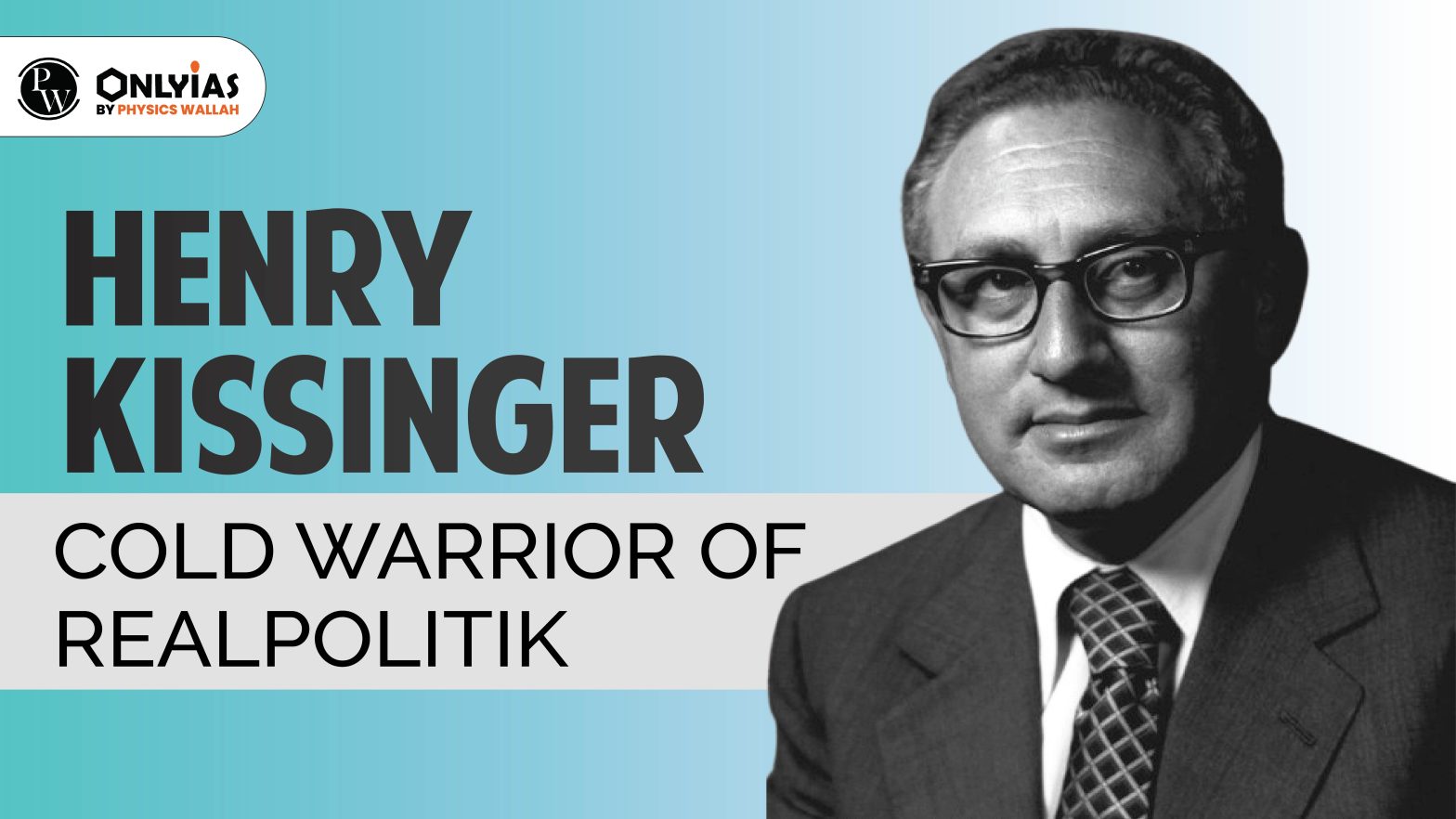Context: This article is based on an Editorial “Henry Kissinger: Cold warrior of realpolitik” Which was published in the Hindu. Recently, a famous American diplomat, Henry Kissinger passed away. He was known for his unique style of diplomacy called “realpolitik.”
| Relevancy for Prelims: Henry Kissinger, Realpolitik, and Back-Channel Diplomacy.
Relevancy for Mains: Realpolitik and its core principles in international relations. |
Who was Henry Kissinger?
- A Controversial Figure: He was controversial because he often compromised morality to further American interests.
- Example: During the Bangladesh liberation war, he favored Pakistan over India.
- However, no one doubts that he effectively advanced U.S. interests worldwide.
- In the words of former Prime Minister of Great Britain, Tony Blair, “If it is possible for diplomacy, at its highest level, to be a form of art, Henry was an artist”.
- Realpolitik: A diplomacy based on practical considerations rather than ideology or ideals.
|
What are the components of Realpolitik?
- Favored Practicality over Ideology: Kissinger made decisions based on practical considerations rather than rigid ideologies.
- Example: He opened up relations with China despite communist ideological differences to counter the Soviet Union.
- Ruthless National Interest: He compromised other concerns like human rights or morality in ruthlessly pursuing American interests.
- Example: He allowed/overlooked genocide in Bangladesh and Pakistan’s suppression of East Pakistanis.
- Strategic Ambiguity: He introduced deliberate ambiguity in policy stances on some issues in America’s strategic interest.
- Example: Strategic Ambiguity about defending Taiwan even while accepting the One China policy.
- Flexible Alliances: He shifted alliances pragmatically rather than treating friends/foes as permanent.
- Example: He brought China closer to counter the USSR even though China was earlier considered an enemy.
- Back-Channel Diplomacy: He secretly established communication channels with rivals to resolve conflicts.
- Example: In July 1971, he met Chinese leaders privately to facilitate Sino-US rapprochement before public declaration of changed ties.
- Back-Channel Diplomacy: It is frequently used by conflicting countries, to avoid getting the engagement. It is the practice of “non-governmental, informal and unofficial contacts and activities between private citizens or groups of individuals.
- The template was used in Track 1 and Track 2 by peaceniks in the Indo-Pak realm earlier or towards the more recent ‘Abrahamic Accords’ besetting Israel-Arab relations.
- Global Power Balance: One of the key aims was maintaining and advancing America’s global power and influence to rivals.
- Example: He focused on countering threats like the USSR rather than human rights.
- Use of ‘Strategic Independence/Autonomy’ by India: In recent times, India owes itself to the foundational principle of realpolitik, as it allows the practitioner not to get closeted within the linear grouping and associated with ‘allies’/blocs to which a sovereign subscribed.
- Example: India is engaging with America, managing China, cultivating Europe, reassuring Russia, bringing Japan into play, drawing neighbors in, extending the neighborhood, and expanding traditional constituencies of support.
- During the Russia-Ukraine War, India bought oil from Russia too.
Conclusion:
- Kissinger executed diplomacy with flexibility guided purely by national interest rather than
- ideology or morality. This expanded America’s strategic options and global reach but compromised its stated values.
- India with its rise in global relevance and animus simultaneously, needs to maintain pace with the evolving nature of diplomacy.
![]() 6 Dec 2023
6 Dec 2023

